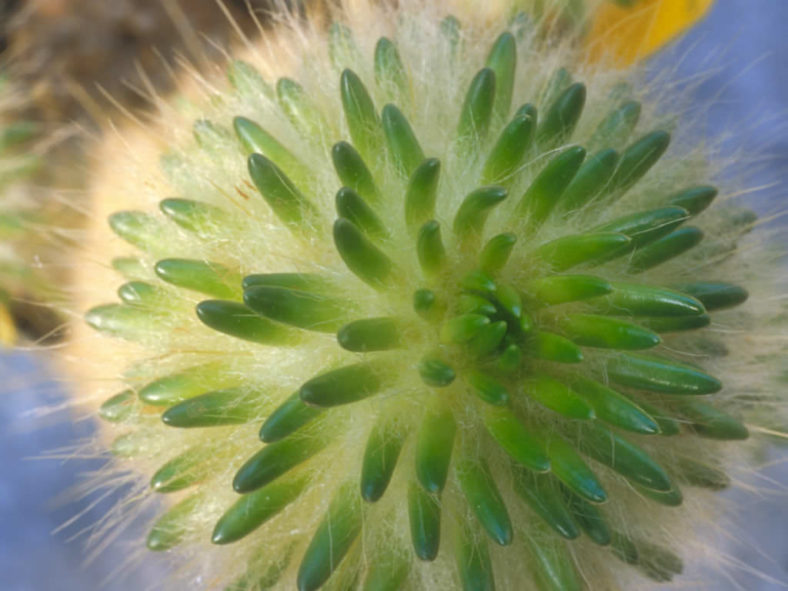Scientific Name
Austrocylindropuntia lagopus (K.Schum.) I.Crook, J.Arnold & M.Lowry
Synonym(s)
Opuntia lagopus, Austrocylindropuntia malyana, Punotia lagopus, Opuntia malyana, Tephrocactus lagopus, Maihueniopsis lagopus
Scientific Classification
Family: Cactaceae
Subfamily: Opuntioideae
Tribe: Austrocylindropuntieae
Genus: Austrocylindropuntia
Etymology
The specific epithet "lagopus" (pronounced "lay-GO-pus") means "hare's-foot" and refers to the woolly hairs on the stems of this species.
Origin
Austrocylindropuntia lagopus is native to Peru.
Description
Austrocylindropuntia lagopus is a cactus with cylindrical stems that have fine, white to creamy-yellowish hair arising from areoles. It can reach a height of 2 feet (60 cm) and a diameter of 3.3 feet (1 m), forming a dense cushion over time. The stems can grow up to 1 foot (30 cm) long. The leaves are green and can measure up to 0.3 inches (0.8 cm) in length. In the habitat, the leaves are almost entirely hidden in the hair. The yellow spines can grow up to 1 inch (2.5 cm) long.
The flowers are diurnal, golden yellow, and can reach a length of up to 1.2 inches (3 cm).

How to Grow and Care for Austrocylindropuntia lagopus
Hardiness: USDA hardiness zones 9a to 11b: from 20°F (-6.7°C) to 50°F (10°C).
The large variety of species within the Opuntia genus means that different Prickly Pears may need slightly different care. All are desert cacti that require ample sunlight, bright light, and very little water. If you live in a hot, arid area, these plants can generally be planted outside, left alone, and enjoyed without additional care.
These cacti will thrive in a garden but can also be successfully grown in pots. To repot, ensure the soil is dry, remove the pot, and remove the old soil. After treating any cuts with fungicide, place the cactus in a new pot and backfill it with potting soil. As with a new cutting, do not water a newly repotted Prickly Pear for a brief period to avoid rotting its roots.
Opuntia can propagate either by cuttings or by seed. To propagate by cuttings, sever pads from a plant and allow them to dry so the wounds can heal. Then, place the plants in dry soil and refrain from watering them until they begin to grow, to avoid rotting.
Learn more at How to Grow and Care for Opuntia.
Links
- Back to genus Austrocylindropuntia
- Succupedia: Browse succulents by Scientific Name, Common Name, Genus, Family, USDA Hardiness Zone, Origin, or cacti by Genus
Photo Gallery
Click on a photo to see a larger version.


